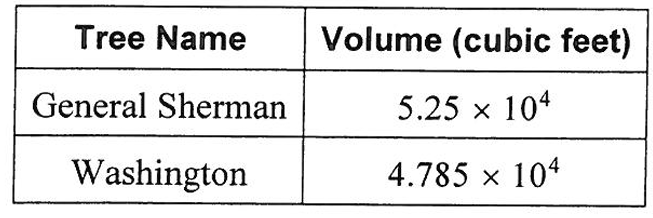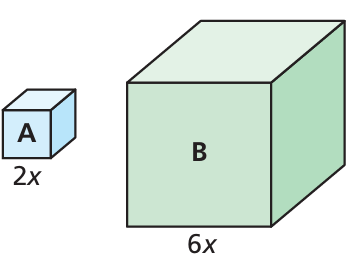QUOTIENT RULE OF EXPONENTS
Quotient Rule of Exponents :
When dividing exponential expression that have the same base, subtract the exponents.
Example 1 :
Solution :
Example 2 :
Solution :
Example 3 :
Solution :
Example 4 :
Solution :
Example 5 :
Solution :
Example 6 :
Solution :
Example 7 :
Solution :
Example 8 :
6x5 ⋅ 3x5 ⋅ x0
Solution :
Multiply the coefficients,
= 6x5 ⋅ 3x5 ⋅ x0
= (6 × 3)(x5 ⋅ x5 ⋅ x0)
By am ⋅ an = am+n,
= 18(x5+5 ⋅ x0)
= 18(x10⋅ x0)
= 18x10
Example 9 :
(3st12)3
Solution :
= (3st12)3
= 33s3(t12)3
= 27s3(t12)3
By (am)n = amn,
= 27s3t(12×3)
= 27s3t36
Example 10 :
Solution :
Example 11 :
Solution :
Simplify the expression. Write your answer as a power.
Example 12 :
(75 ⋅ 73)/72
Solution :
= (75 ⋅ 73)/72
= 7(5 + 3) / 72
= 78/72
= 78 - 2
= 76
Example 13 :
(2.5)11 / (2.5)-x = (2.5)15
Solution :
(2.5)11 / (2.5)-x = (2.5)15
Using the quotient rule of exponents,
(2.5)11+x = (2.5)15
Since the bases are same, we can equate the powers.
11 + x = 15
x = 15 - 11
x = 4
Example 14 :
(-4/5)18 ÷ (-4/5)-x = (-4/5)14
Solution :
(-4/5)18 ÷ (-4/5)-x = (-4/5)14
(-4/5)18 + x = (-4/5)14
18 + x = 14
x = 14 - 18
x = -4
Example 15 :
The table shows the volumes of the largest gaint sequoia trees. Which tree has the greatest volume ? How much greater is its volume than the other tree ?

Solution :
General sherman is heavier than Washington tree.
= (5.25 x 104) / (4.785 x 104)
= (5.25 /4.785)
= 1.09
General sherman is 1.09 times heavier than Washington.
Example 16 :
A byte is a unit used to measure a computer’s memory. The table shows the numbers of bytes in several units of measure

a. How many kilobytes are in 1 terabyte?
b. How many megabytes are in 16 gigabytes?
c. Another unit used to measure a computer’s memory is a bit. There are 8 bits in a byte. How can you convert the number of bytes in each unit of measure given in the table to bits? Can you still use a base of 2? Explain.
Solution :
a. Number of kilobytes in 1 ter byte = 240 / 210
= 240 - 10
= 230
b. Number of bytes in 1 gigabyte = 230
Number of bytes in 16 gigabyte = 16(230)
Number of megabytes in 16 gigabyte = 16(230) / (220)
= 16(210)
= 16384
c. 1 byte = 8 bits
To convert the number of bytes in each unit of measure given in the table to bits using a base of 2, we know that there are 8 bits in a byte. Therefore, to convert the number of bytes to bits, we can multiply the number of bytes by 8.
Example 17 :
Consider Cube A and Cube B.

a. Which property of exponents should you use to simplify an expression for the volume of each cube?
b. How can you use the Power of a Quotient Property to find how many times greater the volume of Cube B is than the volume of Cube A?
Solution :
a)
|
Side length of cube A = 2x Volume of cube A = 2x(2x)(2x) = 8x3 |
Side length of cube B = 6x Volume of cube B = 6x(6x)(6x) = 216x3 |
Using the product rule, we evaluate the volumes of each cubes.
b) Volume of cube B is greater than volume of cube A.
Number of times = 216x3 / 8x3
= 27x3
Using quotient rule, we find the number of times.
Recent Articles
-
Finding Range of Values Inequality Problems
May 21, 24 08:51 PM
Finding Range of Values Inequality Problems -
Solving Two Step Inequality Word Problems
May 21, 24 08:51 AM
Solving Two Step Inequality Word Problems -
Exponential Function Context and Data Modeling
May 20, 24 10:45 PM
Exponential Function Context and Data Modeling